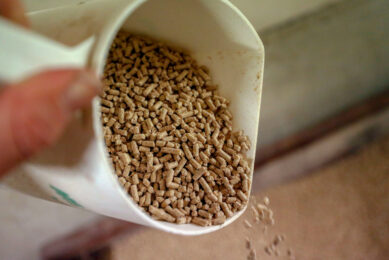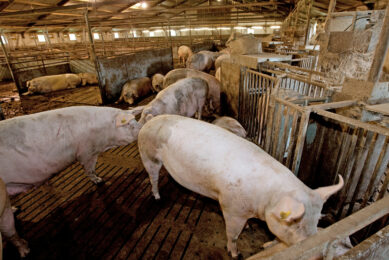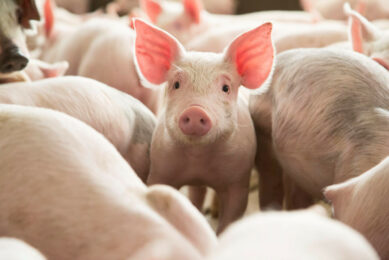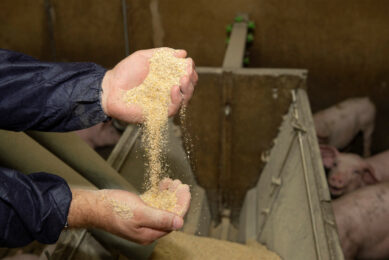Effects of feed on health needs more attention

Pigs do not only receive feed to help them grow, but also to keep them healthy. Professor Dr Josef Kamphues, University of Veterinary Medicine, Hanover, Germany launches a plea to look at things from a different perspective.
Specialised in animal nutrition and intestinal health, German professor Josef Kamphues has been around in the area of animal health for many years. Since 1993 he has been leading the Institute for Animal Nutrition of the University of Veterinary Medicine (TiHo) in Hanover, Germany. At the enormous university complex, it takes a while to find the correct institute. Signs are only located at the entrance and all buildings look alike. In between lectures, Prof Kamphues makes time for an interview. He is not afraid to share his opinion and he is aware that his ideas do not always make a perfect match with common practice in the pig business. When it all would come down to Prof Kamphues, pig producers should start weaning their piglets at five to six weeks. That would make weaning diarrhoea in the vast amount of cases a problem of the past.
All About Feed: How important is gastro-intestinal health for pigs?
Prof Kamphues: “Enormously important. In 40% of the cases in which veterinary antibiotics are being applied, the problems are related to digestive problems in pigs. I am convinced that when compiling and producing feed rations or compound feeds, technical results should not be the only consideration. The influence of the feed on pig health should receive more attention. It is important to work hard on this theme in the years to come.”
To what extent can animal nutrition play a role?
“The grinding and pelleting of raw materials goes against the stomach’s health and function as well as animal welfare. It is really bad, as it happens, to grind raw materials until nothing is left but finely ground feed. Feed is not only supposed to help animals grow, but also to keep them healthy. So the processing technology plays an important role to keep the pigs’ stomachs in top condition. Fermented feed can also be an option. Controlled fermentation of feed has a wide array of advantages, especially for intestinal health. There is one thing to keep in mind though. The risk of fermented rations is that there will be many particles in it which are smaller than 0.2 mm, with a higher risk to gastric ulcers. This is why it is recommendable to add non-fermented ingredients to the final product, e.g. in roller-mills ground barley.”
Does E. coli remain enemy number 1?
“Yes, I am afraid so. I have been doing research on E. coli in pigs for the last 30 years. In those years the studies raised more questions than answers. With regard to oedema disease, caused by E. coli, the problem is not as big, as a good vaccine is available. Things are different, however, with regard to weaning diarrhoea caused by enterotoxigenic E. coli (ETEC). It remains a giant challenge to find solutions to that problem. Many farms wean their piglets somewhere between 22 and 26 days of age. Inside the piglets’ gastro-intestinal tracts it just must be total chaos when they suddenly fail to receive any milk, but instead are presented with feed of plant origin. A sow weaning 15 piglets is considered normal. A third of those animals never had consumed any dry feed at all. Another third only occasionally received some dry feed and the last group never even got to the stage of being properly prepared as it lacked sufficient amounts of colostrum and sow milk in the first place. Now that last group is the least vital. Hence, things can’t possibly go well when milk is removed from a litter of piglets. For these young piglets it is disastrous if feed consumption comes to a stop for several hours. They just can’t go on for long without nutrition and as a consequence, they will overeat. My recommendations to fight weaning diarrhoea are often not welcomed. I would suggest to wean piglets at five to six weeks, allowing piglets to get used to dry feed more gradually. The younger the weaning occurs, the larger the risk for intestinal problems with piglets.”
Is the pig’s gastro-intestinal tract that sensitive after weaning?
“It is, absolutely. The small intestine is about 22 meters long. This allows the animal to absorb nutrients. It is important that proteins are being digested in the small intestine. The focus on strong growth continues to be a real danger. To keep the intestinal tract healthy, coarsely ground grains and meal are ideal. Pelleted, finely ground raw materials are a real burden on the gastro-intestinal tract.”
ProfileProf Dr Josef Kamphues has been leading the Institute for Animal Nutrition since 1993, this is a part of the University of Veterinary Medicine Hannover, Foundation. Prior to that, he had a similar position in Berlin, Germany. Prof Kamphues spoke at the Higher Pig Health event, in January 2018, which was coordinated by Boerderij, a Dutch-language sister title to All About Feed. |
To what extent does animal management play a role?
“To a large extent, I would say. Good hygiene and climate will help prevent infections from occurring or becoming worse. All kinds of stress influence feed digestion and will reduce resistance. It could be too cold in a section, but also too warm. Another hazard is constituted by in-feed mycotoxins, especially deoxynivalenol (DON) is dangerous. If pigs have been exposed to DON for a longer stretch of time, intestinal damage will occur and hence pathogens have more opportunities to strike. It all goes at the expense of the animal’s health and welfare.”
And how about the choice of raw materials?
“The choice of raw materials does play a role in the feed digestion. Rye in pig nutrition, for instance, is a good option. Rye contains carbohydrates which do get fermented in the large intestine. At the fermentation, relatively large amounts of butyric acid is being produced. That will hamper the growth of salmonella and will also keep the animals healthier. In addition, rye has another advantage. This grain type will also act against the formation of skatole, one of the two compounds being responsible for boar taint in meat. In some animals, boar taint is more related to skatole, in others more to androstenone.”
Is it realistic to aim for a pig business without antibiotics?
“Yes, but under one condition: everybody will have to accept that the rate of animal losses in the pig business will grow significantly due to a rise in infections. This is where various demands collide. People demand a reduction of the usage of antibiotics. It is, however, also important to keep the rate of losses low and guarantee animal welfare. Vaccinations are an important tool to allow the reduction of antibiotics.”












